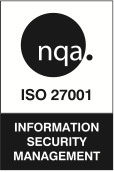It’s an unprecedented time for many of us, lockdown has been ordered with the government calling for individuals and businesses to work remotely, where possible. For some teams, remote working might seem like a daunting concept. They may be thinking, How do I start? What do I need? How do I keep everyone connected?
Here at GCD, remote working is something we have plenty of practice with and we hope by sharing some insights into our approaches and tools, it might just make the transition a little easier for any company out there in need of guidance.
Equipment for Remote Working
Before you close the office doors and send everyone home, it is crucial to determine whether your team has the equipment they need to do their jobs from home.
- Does everyone have access to a laptop or desktop computer?
- Do they require additional monitors?
- Do they have access to fast and reliable internet access?
- Are phones and headsets required?
- Is there an adequate desk / table and chair suitable for working at?
Access
Assured that the correct equipment is in place, don’t forget to check that employees have access to the tools and documents they may need when working from home.
VPN
A VPN (Virtual Private Network) is a useful set up for employees when they need to securely access documents, files, intranets etc from the office network. If one is not in place, some IT assistance may be required, speak with your IT provider about getting set up. In the meantime, here’s a comprehensive guide which outlines the required steps.
If you’re already up and running with a VPN, take a look at its capacity and ensure that everyone who needs access to it, has it.
Secure Passwords
Security is a top concern for many companies when they begin to work remotely. Tools such as 1Password are great assets that securely store, create and encrypt all passwords for an individual, as well as teams. Relying on a secure tool to store and insert passwords online adds a further layer of security from home by removing the need for teams to be keeping records of passwords in print, in notebooks or indeed in the ‘notes’ on their phones.
Secure File Storage
Another worry some may have is around secure file storage and how to access documents. If you are largely paperless then you may already use Google Drive, Dropbox or OneDrive. If you don’t then it’s time to start, make a list of all the essential documents you use everyday. If they are stored on your or other local machines then take a look at the Cloud storage available and start uploading. Make sure everyone who needs access is granted it, don’t forget if someone else needs to update that excel spreadsheet that they have editing rights as well.
If you have physical papers, you could scan these in, but if they need to be manually completed, consider taking the time to type up new digital ones. Try and minimise what needs to be printed, for example forms or questionnaires, could these be completed online and stored in a folder? Yes the format might be a little different than before but it saves the team having to print, complete and scan.
Ideally, it would be great if all these files are the same type that everyone uses e.g. Word, Google docs etc. that will ensure easy access and consistent formatting.
Tools and Systems to Keep You Connected
How do you maintain a great connection with your team and ensure that services and projects stay on track? Depending on what type of business you do, you might use CRMs or ERP systems already. If so those will be a big help in keeping everything running as normal.
However, there are lots of software tools that you can use to help ensure that communication and projects stay on track.
Internal Messaging System
Daily conversations usually take place on an internal messaging system, whether that’s Microsoft Teams or Slack which we use here at GCD. Team communication tools are essential for maintaining morale and keeping everyone connected. They’re a useful tool for general chat and updating your status if you need to nip out or are gone from your home desk providing vital clarity for all.
Virtual Meetings
To keep in touch with clients and provide regular updates on their projects/orders, take a look at some conference call tools, like Zoom, Google Meets or GoToConnect. These virtual meeting tools have great features, you can share your screen, record the video, raise questions and if you really want, see everyone’s faces. If you have a phone management system it may have additional features, have a chat with your account manager.
Project Management Software
Another key tool is project management software, we use a variety at GCD, some you may have heard of, Asana is our main tool where we use sections with tasks to outline what needs to be worked on, these can be assigned a person with a completion date, conversations can be contained within these sections, keeping everything nice and clear. We also utilise Gitlab for the more technical aspects of the custom software solutions we build. Here, tickets can be raised and a developer assigned to each.
But there are many options out there for project management tools, a few other popular ones include Trello and Monday.com. They have lots of features, explore them and find what works for you and your team.
Time Keeping Software
Structure is important for anyone, but for those who use time-based services it’s even more important during these days of uncertainty. There are many options out there that enable you to track your time, we use Harvest, but there is also Toggl or Clockify. This will give clarity to your customers and the assurance that everything is moving along as normal.
Social Media Management Software
The world of social media will continue to turn so actively posting is something that will need to be managed from home as well. Depending on which social platforms you use you may schedule and draft posts using their own management tool, for example Facebook’s is well developed. However, for the likes of Twitter and Instagram you may decide to automate this process.
Social media management software offers the ability to post at the same time across multiple platforms, you can reschedule everything and focus on other business areas. Buffer is a great tool and after their free trial you can then sign up for their free account which is great for small businesses as it gives you: 3 social accounts, 10 scheduled posts, 1 user. Sprout Social is another great tool that provides scheduling, analytics and a lovely user experience.
Communicating with Customers and Clients
Consider all the ways your customers or clients contact you, you’ll need to make sure there won’t be a break in communication.
By Phone
- Ensure calls are redirected to mobiles. If you have a phone management system (like those provided by Avaya, BT or Xorcom), make sure everyone has access and can take calls via their mobiles or laptops.
- Some providers support the ability to connect via the internet, but it’s also common you’ll need a VPN connection to your office (see above).
By Email
- If by email, ensure emails are accessible remotely via an online client such as Outlook or Gmail. This should already be set up on most laptops but double check everyone remembers their login details in case they have to set up again.
Regular Meetings
- As we’ve mentioned above virtual meetings are a great way to keep in touch with customers, and they are just as effective as a face to face chat with the right tools. Take a look at Zoom or Google Meets.
Conclusion
Be prepared for some teething problems along the way, some of these technologies may be new to the team, make sure training and support is available. Maintain regular contact with the wider team using a messaging platform, you can even organise fun things for people to do at home!
At GCD we’re lucky that these practices are second nature to us, we’re working with our customers to continue all custom software development projects and support without disruption. But if you have any questions, don’t hesitate to get in touch.
Together with the help of some clever software we can all carry on as normal, remote working doesn’t have to be a barrier. In fact, it can instead open new opportunities for digital transformation that will enable businesses to deliver products and services in new innovative ways.


